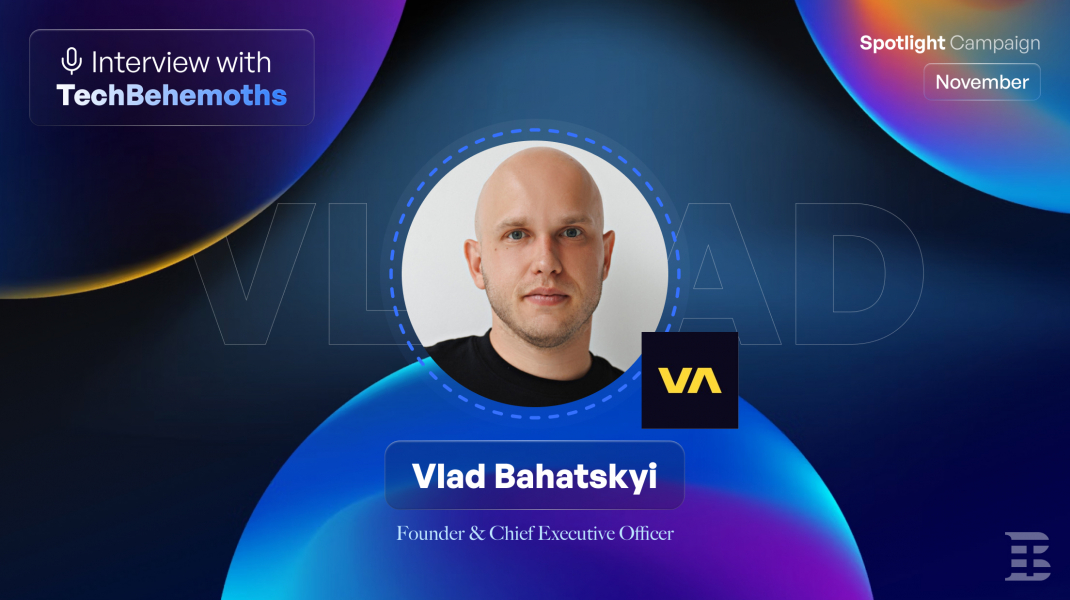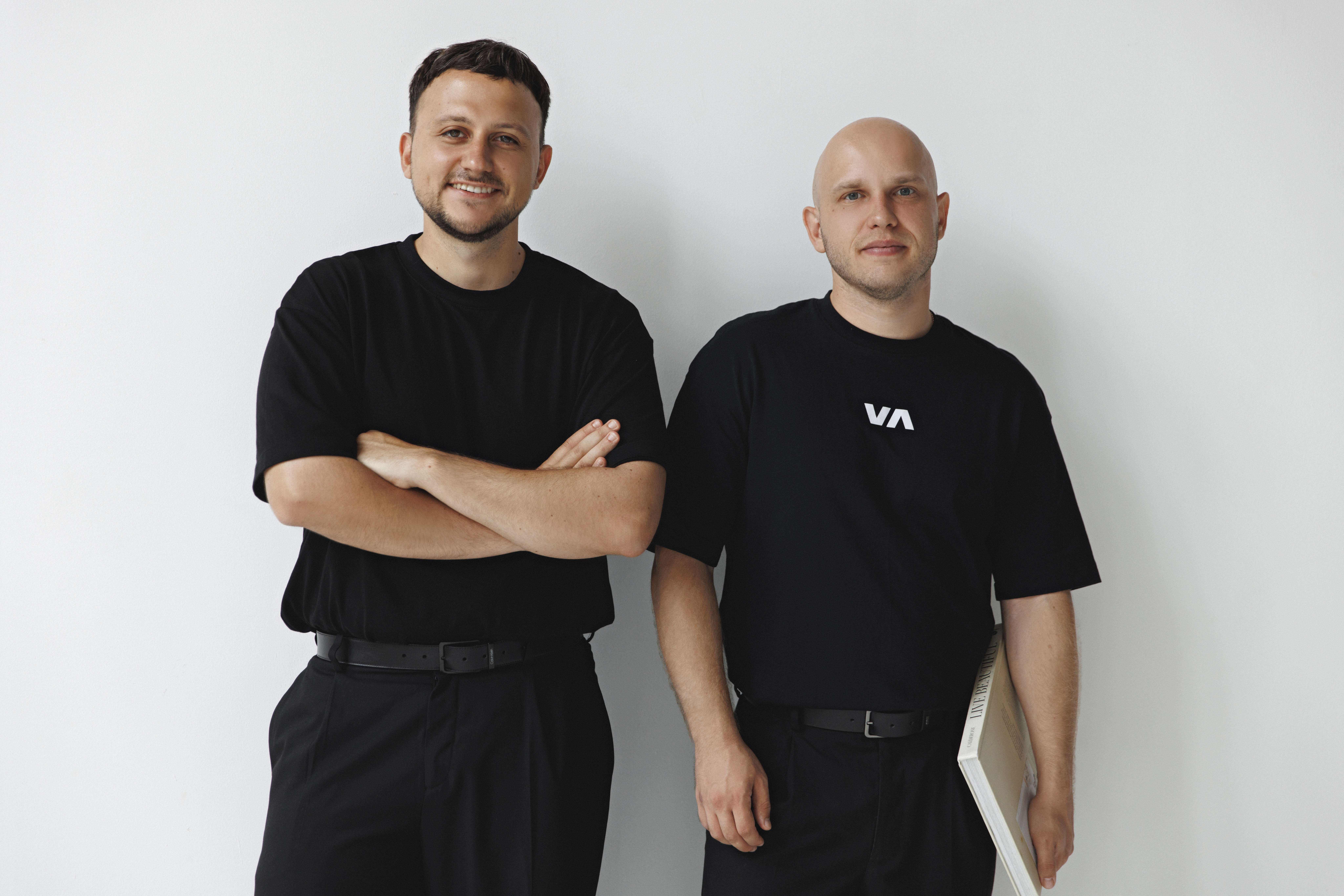A Conversation With Vlad Bahatskyi Founder & Chief Executive Officer at VALMAX

Summary
Vlad, Co-Founder of VALMAX, shares how his journey from law to project management led to building a digital agency that turns complex ideas into clear, strategic design.
Today, VALMAX operates across Switzerland, the USA, and the EU, helping B2B and SaaS companies elevate their digital presence through human-centered design and smart technology.
A three-time TechBehemoths Award winner, the team combines AI innovation with creativity to craft purposeful, business-driven digital experiences.
VALMAX started in Ukraine and now works in Switzerland, the USA, and the EU. The agency has become a reliable partner for SaaS companies, startups, and product teams around the world, helping them create clear and effective digital experiences from complex ideas.
Tell us a bit about your background — your early years, your education, and the key moments that shaped your path to founding VALMAX.
I started out studying law and working as a lawyer, which might seem a bit far from where I am today. However, that foundation actually taught me structure, precision, and how to think through problems. At the same time, I always had an entrepreneurial spark — side businesses, small ventures, interest in how marketing and design work.
Then my partner Max introduced me to project management: we began freelancing, taking on projects while I still kept my legal job. After finishing a formal project-management course, I made the switch fully into building projects and slowly built a team, which eventually grew into VALMAX.
Looking back, the key moment was realising: I didn’t just want to do projects, I wanted to build a business that brings value to clients, helps them grow — that shift from doing to building shaped everything after.
What inspired you to start VALMAX, and what is the underlying philosophy and core values of your business?
What inspired me was seeing how many B2B companies, especially in more traditional industries, were getting left behind in terms of how they present themselves online. Their websites felt outdated, and their branding didn’t reflect the real strength of their business. I knew we could do better: design, strategy, and technology can come together to communicate real value.
From day one, VALMAX’s philosophy has been about finding balance between strong design and real business thinking. We value clarity, practicality, and a human approach in everything we do. It is about creating solutions that not only look good but also help businesses grow. Every project is an opportunity to solve real problems, communicate a brand’s story, and make the experience meaningful for the people who interact with it. We focus on understanding both the client’s goals and the end user’s needs because great design is strategic, purposeful, and impactful.

In your view, what are the biggest mistakes B2B companies make with their digital presence today, and how does VALMAX help solve them?
One of the biggest mistakes B2B companies make is thinking their website and brand don’t matter. Many assume clients mostly come through referrals or offline networks, so an online presence is secondary. Yet even in B2B, the first thing a potential buyer does is check a vendor’s website. It sets the tone instantly. A clear, professional site signals reliability, while a confusing or outdated one raises doubts.
Another common mistake is overcomplicating the message. Sites often focus on technical details or jargon but fail to show why clients should care.
At VALMAX, we help companies avoid these pitfalls by making the brand and site reflect their strengths. We focus on positioning, messaging, and flows that guide visitors from “what you do” to “why it matters.” Design and development bring it to life with clean UX and strong visuals. The website becomes a tool that builds trust and supports decision-making.
From your 200+ delivered projects, could you highlight one that represents your approach and results best, and what made it successful?
One of our standout examples is the project we did for Carbo Tech — a global manufacturer of ceramic beads used in demanding industrial applications. Their product line had been operating for over 45 years, yet their digital presence didn’t reflect that strength.
We re-branded Carbo from the ground up and built a website of 50+ custom pages tailored to different user needs, industries, and products. The homepage opens with a single ceramic sphere (visual metaphor) slowly rotating, that one image tells the story: precision, durability, innovation.
We built dual navigation: by product and by industry application, so that visitors could approach the site according to their needs. We also developed a “Knowledge Hub” with rich content, technical documentation, 3D visuals, and forms to qualify leads.
The results? Within months after the launch, Carbo had sold out every production slot for the next three months and began planning a new plant. This case illustrates how our method works: understand the product deeply, make the brand reflect that strength, design the UX around real user journeys, then execute technically.
Design and web development are evolving fast. What trends in design and web development do you see shaping the next 2–3 years for B2B companies?
I’d say the trends are fairly clear. AI is becoming a major part of how companies work and how projects are delivered. It influences not only the speed of development and the quality of output but also budgets, team workflows, and the overall execution of projects. For B2B companies, it’s not just about websites anymore; it’s about the broader digital presence and how users experience the brand.
Many companies are already using AI-powered tools, whether for design, development, or integrating different communication channels with clients. That said, I think one trend that will remain strong is human-centered design. The more AI becomes part of the workflow, the more important it is to keep a human touch. People still want interactions that feel personal, and they often resist chatbots or automated tools if they feel too impersonal. Balancing AI efficiency with genuine human experience will be a key trend in the next few years.

AI is transforming digital workflows. From your perspective, what opportunities and challenges does AI bring to digital agencies today? How is VALMAX integrating AI into creative and development processes?
I would say that on the one hand, AI opens new opportunities for agencies. It can become a source of new clients who are already thinking with AI in mind, and it affects how people find information online, for example, through search. Depending on how well a site or project is indexed, it can either unlock opportunities or present challenges. Clients today often come more prepared—they already have ideas, sometimes have tried AI tools themselves, and have clearer expectations about what they want. That actually helps us understand their vision better and deliver a stronger project.
On the other hand, there are challenges. Some new clients underestimate what goes into a project because they assume AI can solve everything in five minutes. They expect faster results and lower budgets, which can reduce the average project size. That said, it also pushes agencies to improve workflows, speed up project delivery, and use AI as a practical helper for design, development, and research.
At VALMAX, we actively integrate AI into our processes. Designers and developers use tools like GPT chat or internal AI assistants for complex tasks. AI helps with research, drafting documentation, and even communicating with clients. It’s a great assistant when used properly, but it doesn’t replace human judgment or creativity. The trick is knowing where AI adds value without overestimating what it can do.
Your team is heading to Web Summit Lisbon 2025 this November. What are your main goals for attending this event, and what do you usually look for when participating in large industry conferences?
The main goal for us at Web Summit is to broaden our perspective. We want to see what is happening in the industry and in the world, to notice new ideas, innovations, and trends. I’m writing this while I’m at the Summit, so it’s interesting to reflect on it in real time.
Of course, a lot of the discussions are about AI and our products, but what I really enjoy is talking to people and seeing how these technologies influence their work and daily life. AI is not a silver bullet that solves everything, but it’s fascinating to watch how ideas from the Summit can be transformed into practical ways to use AI and how they affect the market.
It’s also about expanding contacts, networking, and getting to know people. Many of the companies here are in the same niche, so they are not necessarily direct clients, but these conversations can open additional opportunities for collaboration. There’s a lot to learn from the materials, the talks, and the speakers, which makes attending the Summit very valuable for us and for bringing fresh perspectives back to VALMAX.
VALMAX has been a TechBehemoths Awards Winner for three consecutive years and is a nominee again this year. What does this ongoing recognition mean for you and your team?
Being recognized by TechBehemoths three years in a row, and now being nominated again, is encouraging for our team. It shows that the work we do matters and that it is noticed beyond our immediate clients. For me personally, it is a reminder of the standards we aim for and the responsibility to keep improving.
For VALMAX, the awards help with visibility and credibility. They signal to potential clients that we are serious and experienced in delivering high-quality design and development. At the same time, the most important measure is always the impact on our clients — the award is meaningful because it reflects the results we create for them. TechBehemoths has helped us connect with more businesses that value quality work, and that exposure has been useful for the company’s growth.

Quick-Answer Section
One word that describes VALMAX: Purposeful
Favorite tool for design & development: Figma – still unbeatable for collaboration and design-to-dev handoff
Future of web design in three words: Human. Fast. Intelligent.
And to conclude, please send a message and advice to our readers.
Don’t treat your website or brand as something you’ll “get around to later”.
In B2B today, your digital presence often is your first handshake with a potential client.
Be curious about every technology change, but don’t forget this: at the end of the day, you’re designing for people. So merge efficiency with authenticity, strategy with personality, and technology with human insight.